Page 225 of 280

a,
a,
..... N r-. N ..... 0
s ..
Tires and vehicle load limits
There are limits to the amount of load or weight that any vehicle
and any tire can carry . A vehicle
that is overloaded will not handle
well and is more difficult to stop. Overloading can not only lead to
loss of vehicle control, but can al
so damage important parts of the
vehicle and can lead to sudden
tire failure, including a blowout
and sudden deflation that can
cause the vehicle to crash.
Your safety and that of your pas
sengers also depends on making
sure that load limits are not ex
ceeded. Vehicle load includes ev
erybody and everything in and on
the vehicle. These load limits are
technically referred to as the vehi
cle's
Gross Vehicle Weight Rat
ing
("GVWR").
The "GVWR" includes the weight
of the basic vehicle, all factory in
stalled accessories, a full tank of
fuel, oil, coolant and other fluids
plus maximum load. The maxi
mum load includes the number of
passengers that the vehicle is in
tended to carry ("seating capaci
ty") with an assumed weight of 150 lbs . (68 kg) for each passen-
Wheels
ger at a designated seating posi
tion and the total weight of any luggage in the vehicle . If you tow
a trailer, the weight of the trailer
hitch and the tongue weight of
the loaded trailer must be includ
ed as part of the vehicle load.
The
Gross Axle Weight Rating
("GAWR") is the maximum load
that can be applied at each of the
vehicle's two axles.
The fact that there is an upper limit to your vehicle's Gross Vehi
cle Weight Rating means that the
total weight of whatever is being
carried in the vehicle (including
the weight of a trailer hitch and
the tongue weight of the loaded
trailer) is limited. The more pas
sengers in the vehicle or passen
gers who are heavier than the
standard weights assumed mean
that less weight can be carried as luggage.
The Gross Vehicle Weight Rating and the Gross Axle Weight Rating
are listed on the safety compli
ance sticker label located on the
driver's side 8-pillar
¢ page 220,
fig. 190.
223
..
Page 226 of 280

Wheels
A WARNING
Overloading a ve hicl e can cause
loss of vehicle control, a crash
or other accident, serious per
sonal injury, and even death .
-Carrying more weight than your vehicle was designed to carry will prevent the vehicle
from handling properly and
i ncrease the risk of the loss of
vehicle control.
-The brakes on a vehicle that has been overloaded may not
be able to stop the vehicle
within a safe distance.
- Tires on a vehicle that has
been overloaded can fail sud
denly, including a blowout and
sudden deflation, causing loss
of control and a crash.
- Always make sure that the to
tal load being transported -
i ncluding the weight of a trail
er hitch and the tongue
weight of a loaded trailer -
does not make the vehicle
heavier than the vehicle's
Gross Vehicle Weight Rating.
Determining correct load
limit
Use the example below to calcu late the total weight of the pas -
224
sengers and luggage or other
things that you plan to transport so that you can make sure that
your vehicle will not be overload
ed.
Steps for Determining Correct Load Limit
1. Locate t he statement "THE
COMBINED WE IGH T OF OCC U
PANTS AND CARGO SHOULD
NEV ER EXCEED XXX KG OR XXX
LBS"on your vehicle's placard
(tire inflation pressure label)
¢ page 220, fig . 190 .
2. Determine the combined
weight of the driver and pas
sengers that will be r iding in
your vehicle.
3. Subtract the combined weight
of the driver and passengers
from
"XXX" kilograms or "XXX"
pounds shown on the sticker
¢ page 220, fig. 190.
4. The resu lting fig ure equals the
available amount of cargo and luggage load capacity. For ex
ample, if the "XXX" amount
equals 1400 lbs . and there will
be five 150 lbs . passengers in
your vehic le, the amount of
available cargo and luggage load capacity is 650 lbs . .,.
Page 227 of 280

co
co
,...,
N
" N ,...,
0 0 <..:l -
(1400-750 (5 X 150) = 650
lbs.)
5 . De termin e the combined
w eig ht of lugg age and carg o
b eing load ed on the vehicle .
Th at w eight ma y not safel y ex
c e e d th e ava ilabl e c argo and
lu ggag e load ca pacit y ca lculat
ed in Step 4 .
6 . I f you r veh ic le will b e tow ing a
tr aile r, load from your tr ailer
will be tran sferred to y our
ve
hi cle . Con sult thi s manual to
de te rmin e how this redu ces
th e av ailabl e car go and lug
ga ge load capa cit y o f your vehi
cle.
..,. Chec k the tire s idewall
(¢pag e 210, fig . 188) to de ter
min e the de sign ated load r ating
for a speci fic tire.
Wheel bolts and rims
Wheel bolts
Wheel bolts must be clean and loosen/t ighten
eas ily.
Rims
Rims with a bolted rim ring " or with bolted wheel
covers* consist of multip le pieces . These compo
n ents were bolted together using specia l bolts
a nd a special procedure . You must not repair or
d isassemble th em ¢.&. .
_& WARNING
Wheel bolts tha t are t igh tened or re paired in
c orrectly can be come loose and result in loss
Wh eel s
of vehicle contro l, wh ich increases the risk of
an accident. For the cor rect tighten ing spec ifi
cation, see
c:> page 238, After changing a
wheel .
-Always keep the wheel bolts and the
threads in the wheel hub clean and free of
grease .
- Only use wheel bolts that fit the rim.
- Always have damaged rims repaired by an
authorized Audi dealer or author ized Audi
Serv ice Facility. Never repair o r disassemb le
rims you rself, because th is increases the r isk
of an acc ident .
Winter tires
Winter tires signif icant ly imp rove the vehicle's
handling when dr iv ing in winter conditions. Be
ca use of their const ru ct io n (w idth, compou nd,
t read pat tern), summer tires provide less t rac
tion on ice and snow .
.,. Use winter tires on all four wheels.
.,. Onl y use winter tires that a re approved fo r yo ur
veh icle .
.,. Please note that the maximum permitted
speed may be lower with winter tires
c:> _&. . An
author ized Audi dealer or authorized A udi Serv
ice Facility can inform you about the maximum
permit ted speed for your tires.
.,. Check the tire pressure after insta lling wheels
c=> page220 .
The effectiveness of winter tires is reduced great
ly when the tread is worn down to a depth of
0.157 in (4 mm) . T he characterist ics of winter
t ir es also decrease g reatly as the tire ages, re
gardless of t he rema in ing t read.
_& WARNING
- Never drive fas ter than the max imum pe r
mitted speed for your tires. This could c ause
the t ires to heat up too much. This increases
the risk of an accident because it can cause
the t ire to burst.
- Always adapt your driving to the road and traffic conditions. Drive carefully and reduce
your speed on icy or slippery roads . Even
winter t ires can lose tract ion on black ice . ..,..
225
Page 228 of 280

Wheels
@ For the sake of the environment
Reinstall su mmer tires at the appropriate
time, because they pro vide better handling
when roads are free of snow and ice. Summer
tires cause less road noise, tire wear and fuel
consumption.
@ Tips
You can also use all season tires instead of
w inter t ires. Please note that in some coun
tries where w inter tires are required, only
w inter t ires with the
& symbol may be per
m itted .
Snow chains
Snow chains not only imp rove the dr iving in w in
ter ro ad conditions, b ut also the brak ing .
.,. Only install snow chains o n the front wheels .
T his applies also to ve hicles w ith all wheel
drive* .
.,. Check and correct the sea ting of the snow
chains a fter dr iv ing a few fee t, if necessa ry. Fo l
l ow the instructions from the manufacturer .
.,. Note th e maximum speed of 30 mph (SO km/
h). Note the loca l regulat ions.
Use of snow chains is on ly permitted with certain
rim/t ire combinations due to technical reasons .
Check with an authorized Audi dealer or author
i z ed Aud i Service Fac ility to see if you may use
snow chains.
You must remove the snow c hains on roads w it h
out snow. Otherw ise, you could impa ir dr iv ing
ab ility and damage the tires.
A WARNING
Us ing incorrect snow chains or insta lling snow
chains incorrectly can result in loss of vehicle
cont rol, which inc reases the risk of an acc i
dent .
(D Note
-Snow cha ins can damage the rims/wheel
covers* if the chains come into d irec t con
tac t wi th them . Remove the wheel cove rs*
first. Use coa ted snow chai ns.
226
- Us ing snow c hains that add more than 0. 4
inch (10.S mm) of height can severely dam
age the whee l housings and other vehicle
components .
- Do not insta ll and use snow chains if there is
a malfunction in the adapt ive a ir suspen
sion*, because the vehicle he ight will be
very low. If you drive wit h snow chains any
way, the whee l housings and other vehicle
components can be seve rely damaged .
(D Tips
When using snow chains, it may be useful to
switc h on sport mode
<=> page 121.
Low aspect ratio tires
You r A udi is factory-equ ipped with low aspect ra
tio t ires . T hese tires have bee n thoroug hly tested
a n d been sele cted specifi ca lly for your mode l for
thei r sup erb pe rformance, road fee l and han dling
u nder a var iety of driving conditions. Ask your au
thori zed Audi dea ler for more detai ls .
The low as pec t rat io o f these tires is indica ted by
a n umera l of
55 or le ss in t he t ire's si ze designa
tion . The numeral represents the ratio of the
tire's si dewa ll height in relation to its trea d width
expressed in percentage. Conventiona l tires have
a height/width ratio of 60 or more.
The performance of low-aspect-ratio tire s is par
ticularly sensitive to improper inflation pres
sure. It is the refore important that low aspect
rat io tires are inflated to the specified pressure
and that the inflation pressure is regularly
checked and maintained. Tir e pressur es should
be checked at lea st once a month and always
before a long trip
¢ page 220.
What you can do to avoid tire and rim
damage
Low aspect ratio tires can be damaged more eas i
l y by impact with potholes, curbs, gullies or
r idges on the road , particula rly if the tire is un -
der i nfla ted. .,..
Page 229 of 280

co
co
.... N
" N .... 0
In o rder to minimize the oc currence of impact
damage to the tires of your vehicle, we recom mend that you observe the fo llow ing
precautions:
- Always maintain recommended inflation pres
sures. Check your tire pressure every 2,000
miles (3,000 km) and add a ir if necessary .
- Drive carefully on roads with potho les, deep
gullies or ridges. The impact from driving
through or over such obstacles can damage
your tires . Impact w ith a curb may also cause
damage to your tires.
- After any impact, immediately inspect your
tires or have them inspected by the nearest au
thorized Aud i dealer . Replace a damaged tire as
soon as poss ible .
- Inspect your t ires every 2 ,000 miles (3,000 km)
for damage and wear . Damage is not always
easy to see . Damage can lead to loss of a ir and
underinflation , which cou ld eventually cause
t ir e failure. If you be lieve tha t a tire may have
been damaged, replace the t ire as soon as pos
s ible.
= T hese tires may wear more q uick ly than othe rs.
- Please a lso remember that, while these tires
deliver responsive hand ling, they may r ide less
comfortab ly and ma ke more no ise th an other
cho ices .
Reduced performance in winter /cold season
condit ions
All t ires are desig ned fo r ce rtain pur poses. The
l ow aspect ratio, ul tra high performance t ires
originally insta lled on you r vehicle a re intended
for maximum dry and wet road performance and handling. They are not s uitable for cold, snowy or
icy weather cond it ions. If you dr ive under those
circumstances, you shou ld equ ip your ve hicle
with a ll-season or winter tires, wh ic h offer better
traction under those condit ions . We suggest you
use the recommended snow or all-season tires
specified fo r you r vehicle , or the ir equivalent.
Refer to¢
page 225 for more detailed informa
tion rega rding winter tires .
Uniform tire quality grading
8 -Tread wea r '
Wheel s
-Traction AA ABC
- Tempe ra tu re ABC
Quali ty g rades can be found where applicable o n
the tire side wall be tween tread shoulder and
max imum sec tion width
¢ page 210, fig . 188.
For example: Tread wear 200 , Traction AA, Tem
perature
A .
All passenger car ti res must conform to Federal
Safety Requiremen ts in addit io n to these grades .
Tread wear
The tread wear grade is a comparative rating
based on the wea r rate of the tire when tested
u nder controlled cond it ions on a specif ied gov
ernment test course.
F or example , a tire graded 1 50 wou ld wear one
and one half (1 1/2) times as we ll on the govern
ment course as a t ire graded 100 .
T he re lative performance of tires depends upon
t h e actual conditions of thei r use, however, and
may depa rt sig nificantly from the norm due to
variations in driv ing habits , service practices and
differences in road character istics and cli mate.
Traction
The traction grades, from highest to lowest, a re
AA , A, Band
C. Those grades represent t he tire 's
ability to stop o n we t pavement as measured un
der controlled cond itions on specified govern
ment test surfaces of asphalt and concrete. A tire
marked C may have poor traction performance
¢ ,&. .
Temperature
The temperature grades are A (the highest), B,
and C, representing the tire's resistance to the
generat ion of heat and its abi lity to dissipate
heat when tested u nder cont rolled conditions on
a specified indoor laboratory test wheel.
Sustained h igh temperatu re can cause the mate
rial of the tire to degenerate and reduce tire life,
and excessive tempe rature can lead to s udden
t ire failure ¢,&. . .,.
227
Page 230 of 280

Wheels
The grade C corresponds to a level of perform
ance which all passenger car tires must meet un
der the Federal Motor Vehicle Safety Standard No.
109. Grades B and A represent higher levels
of performance on the laboratory test wheel than
the minimum required by law.
A WARNING
The traction grade assigned to this tire is
based on straight-ahead braking traction
tests, and does not include acceleration, cor
nering, hydroplaning or peak traction charac
teristics.
A WARNING
The temperature grade for this tire is estab
lished for a tire that is properly inflated and
not overloaded. Excessive speed, underinfla
tion, or excessive loading, either separately or
in combination, can cause heat buildup and
possible tire failure.
A WARNING
Temperature grades apply to tires that are properly inflated and not over or underinflat
ed.
Tire pressure monitoring system
CD General notes
Each tire, including the spare (if provided),
should be checked monthly when cold and inflat
ed to the inflation pressure recommended by the
vehicle manufacturer on the vehicle placard or
tire inflation pressure label. (If your vehicle has
tires of a different size than the size indicated on
the vehicle placard or tire inflation pressure la
bel, you should determine the proper tire infla
tion pressure for those tires).
As an added safety feature, your vehicle has been
equipped with a tire pressure monitoring system
(TPMS) that illuminates a low tire pressure tell
tale when one or more of your tires is significant ly under-inflated. Accordingly, when the low tire
pressure telltale illuminates, you should stop and
228
check your tires as soon as possible, and inflate
them to the proper pressure . Driving on a signifi
cantly under-inflated tire causes the tire to over
heat and can lead to tire failure. Under-inflation
also reduces fuel efficiency and tire tread life,
and may affect the vehicle's handling and stop ping ability.
Please note that the TPMS is not a substitute for
proper tire maintenance, and it is the driver's re
sponsibility to maintain correct tire pressure, even if under-inflation has not reached the level
to trigger illumination of the TPMS low tire pres
sure tel ltale.
Your vehicle has also been equipped with a TPMS
malfunction indicator to indicate when the sys
tem is not operating properly. The TPMS mal
function indicator is combined with the low t ire
pressure telltale. When the system detects a
malfunction, the telltale will flash for approxi
mately one minute and then remain continuously
illuminated. This sequence will continue upon
subsequent vehicle start-ups as long as the mal
function exists.
When the malfunction indicator is illuminated,
the system may not be able to detect or signal
low tire pressure as intended. TPMS malfunctions
may occur for a variety of reasons, including the
installation of replacement or alternate tires or
wheels on the veh icle that prevent the TPMS
from functioning properly. Always check the
TPMS malfunction telltale after replacing one or more tires or wheels on your vehicle to ensure
that the replacement or alternate tires and
wheels allow the TPMS to continue to function
properly.
Page 231 of 280

Tire pressure monitoring system
Applies to: vehicles with Tire Pressure Monitoring System in
dicator
The tire pressure indicator in the instrument
cluster informs you if the tire pressure is too low
or if there is a system malfunction .
Fig. 192 Instrument clus ter : indicator ligh t w ith message
Using the ABS sensors, the tire pressure monitor
ing system compares the tire tread circumfer
ence and vib ration characteristics of the individu
al tires.
If the pressure changes in one or more
tires, this is indicated in the instrument cluster
display with an indicator light
RE and a message.
If only one tire is affected, the location of that
tire will be indicated.
The tire pressures must be stored in the Infotain
ment system again each time the pressures
change (switching between partial and full load pressure) or after changing or replacing a tire on
your vehicle ¢
page 230 . The tire pressure moni
toring system only monitors the tire pressure you have stored. Refer to the tire pressure label for
the recommended tire pressure for your vehicle
¢page 220, fig.191 .
Tire tread circumference and v ibration character
istics can change and cause a tire pressure warn
ing if:
- the tire pressure in one or more tires is too low.
- the tire has structural damage.
- the tire was replaced or the tire pressure was
changed and it was not stored
¢ page 230.
- the spare tire* is installed.
~ Indicator lights ....
~ RE-Loss of pressure in at least one tire¢,&,. . ....
g Check the tires and replace or repair if necessary.
<.,;) 'SI"
Wheels
Check/correct the pressures of all four tires and
store the pressure again in the Infotainment sys
tem
¢ page 230 .
fflm (T ire Pressure Monitoring System) Tire
press ure: System malfunction!.
Ifffi:m appears
after switching the ignition on or while driving
and the
RE indicator light in the instrument clus
ter blinks for approximately one minute and then
stays on, there is system malfunction. Try to
store the correct tire pressures¢
page 230. If
the indicator light does turn off or turns on again
after a short period of time , drive to an author
ized Audi dealer or author ized Audi Service Facili
ty immediately to have the malfunction correct
ed.
_& WARNING ,..___
- If the tire pressure indicator appears in the
d isplay, reduce your speed immediately and
avoid any hard steering or braking maneu
vers. Stop as soon as possible and check the
tires and their pressure.
- The driver is responsible for maintaining the
correct tire pressure. You must check the
tire pressure regularly.
- Under certain conditions (such as a sporty
driving style, winter conditions or unpaved roads), the tire pressure monitoring system
indicator may be delayed .
@ Tips
-The tire pressure monitoring system can al
so stop working when there is an ESC mal
function .
- Using snow chains may result in a system
malfunction.
- The tire pressure monitoring system in your
Audi was calibrated with "Audi Original
Tires"¢
page 217 . We recommend that you
use these tires.
229
Page 232 of 280
Wheels
Storing tire pressures
Applies to: vehicles with Tire Pressure Monito ring System in
dicator
If the tire pressure changes or a tire is replaced, it must be confirmed in the Infotainment system.
• Make s ure before storing that the tire pressures
of all fo ur t ires meet the specified val ues and
are adapted to the load
c> page 220.
• Switc h the ignition on.
• Se lect : the ICARI function button
> (Car )* Sys
tems
con trol b utton > Service & checks > Tire
pres sure monitor > Store tire pres sure > Yes,
stor e now .
(D Tips
Do not s tore the tire press ures if snow chains
a re installed.
230
 1
1 2
2 3
3 4
4 5
5 6
6 7
7 8
8 9
9 10
10 11
11 12
12 13
13 14
14 15
15 16
16 17
17 18
18 19
19 20
20 21
21 22
22 23
23 24
24 25
25 26
26 27
27 28
28 29
29 30
30 31
31 32
32 33
33 34
34 35
35 36
36 37
37 38
38 39
39 40
40 41
41 42
42 43
43 44
44 45
45 46
46 47
47 48
48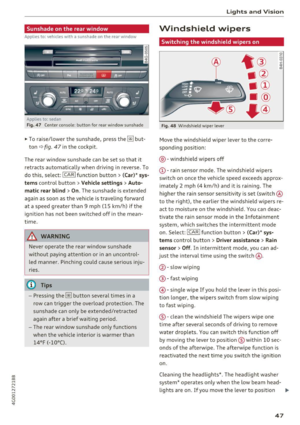 49
49 50
50 51
51 52
52 53
53 54
54 55
55 56
56 57
57 58
58 59
59 60
60 61
61 62
62 63
63 64
64 65
65 66
66 67
67 68
68 69
69 70
70 71
71 72
72 73
73 74
74 75
75 76
76 77
77 78
78 79
79 80
80 81
81 82
82 83
83 84
84 85
85 86
86 87
87 88
88 89
89 90
90 91
91 92
92 93
93 94
94 95
95 96
96 97
97 98
98 99
99 100
100 101
101 102
102 103
103 104
104 105
105 106
106 107
107 108
108 109
109 110
110 111
111 112
112 113
113 114
114 115
115 116
116 117
117 118
118 119
119 120
120 121
121 122
122 123
123 124
124 125
125 126
126 127
127 128
128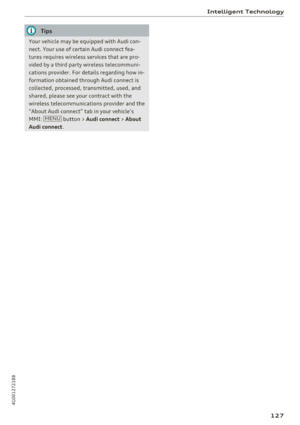 129
129 130
130 131
131 132
132 133
133 134
134 135
135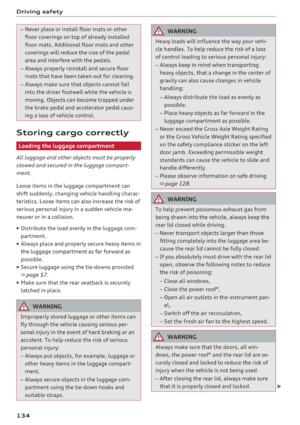 136
136 137
137 138
138 139
139 140
140 141
141 142
142 143
143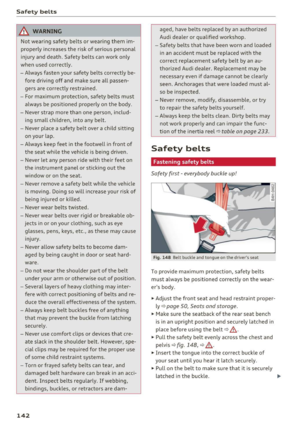 144
144 145
145 146
146 147
147 148
148 149
149 150
150 151
151 152
152 153
153 154
154 155
155 156
156 157
157 158
158 159
159 160
160 161
161 162
162 163
163 164
164 165
165 166
166 167
167 168
168 169
169 170
170 171
171 172
172 173
173 174
174 175
175 176
176 177
177 178
178 179
179 180
180 181
181 182
182 183
183 184
184 185
185 186
186 187
187 188
188 189
189 190
190 191
191 192
192 193
193 194
194 195
195 196
196 197
197 198
198 199
199 200
200 201
201 202
202 203
203 204
204 205
205 206
206 207
207 208
208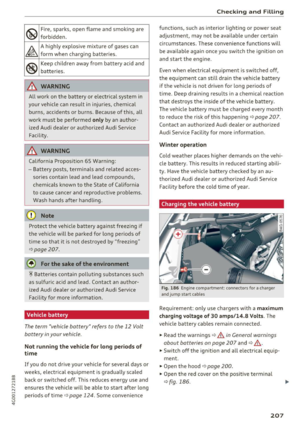 209
209 210
210 211
211 212
212 213
213 214
214 215
215 216
216 217
217 218
218 219
219 220
220 221
221 222
222 223
223 224
224 225
225 226
226 227
227 228
228 229
229 230
230 231
231 232
232 233
233 234
234 235
235 236
236 237
237 238
238 239
239 240
240 241
241 242
242 243
243 244
244 245
245 246
246 247
247 248
248 249
249 250
250 251
251 252
252 253
253 254
254 255
255 256
256 257
257 258
258 259
259 260
260 261
261 262
262 263
263 264
264 265
265 266
266 267
267 268
268 269
269 270
270 271
271 272
272 273
273 274
274 275
275 276
276 277
277 278
278 279
279






